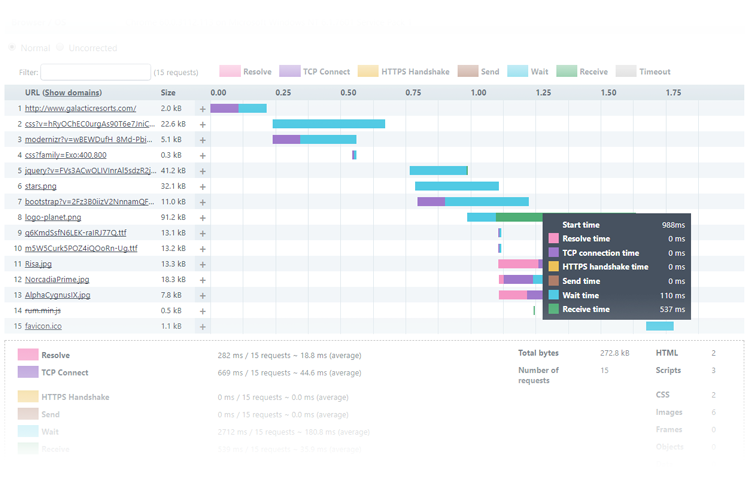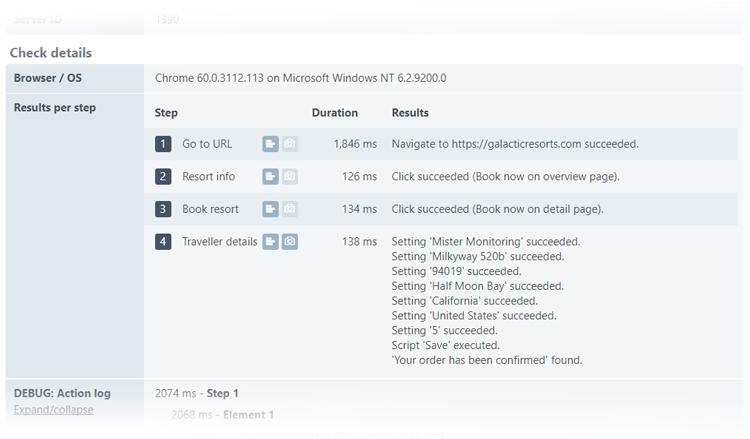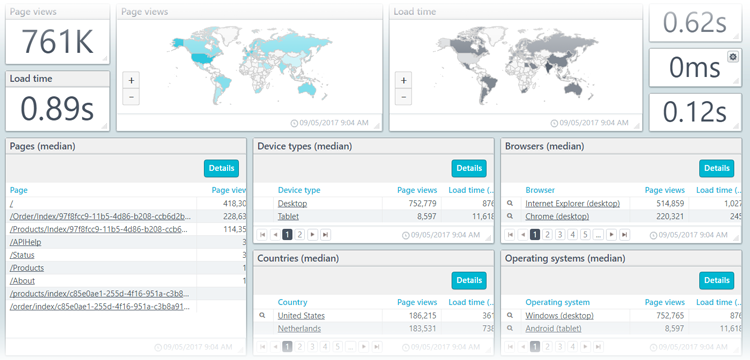When your business is all about providing a great product or service to your users, you have to think about the digital experience that you deliver. Companies spend huge bucks researching, promoting, developing quality content, creating highly intuitive user interfaces, and building solutions to deliver a quality user experience that works well across all devices, browsers, operating systems, and connection speeds. Digital Experience Monitoring (DEM) provides companies a way to evaluate their users’ experiences and respond quickly when that experience falters. Uptrends is an important part of any DEM strategy.
What is Digital Experience Monitoring?
Digital experience monitoring is all about the end user’s satisfaction when using your site or service. From the initial request to the final post, if you haven’t streamlined your end-user experience for function and speed you’re losing customers, revenue, and reputation. Digital Experience Monitoring provides real insights into the performance and function of your website or service.
The Internet grows more complex every day as more sites and services become more interconnected, and the Internet of Things grows exponentially. With the continued growth and expansion of the Internet, keeping the digital experience in check becomes more complicated. That’s where planning your Digital Experience Monitoring strategy becomes vital for brands that care about their users’ experiences.
Let’s take a moment to consider the users to whom we keep referring. The term User Experience or UX has been around a while, but you will notice DEM refers to “Digital Experience” not “User Experience.” UX is all about the human user while DEM acknowledges all of a system’s users. Besides people, the user pool also includes other devices and software that may not have a human component at all. The Internet of Things brings an entirely different set of users that communicate over the Internet, for example, automobiles, appliances, software systems, and smart homes. The systems that communicate with these devices require fast, trustworthy experiences as well.
Synthetic Digital Experience Monitoring
Synthetic Monitoring is an active monitoring approach that uses strategically placed worldwide checkpoints that routinely connect to your system. The proactive synthetic solutions keep a diligent eye on your systems and send alerts when they encounter an availability, performance, or function issue with your websites, services, or servers.
Availability Monitoring
The very first step in any DEM solution is to maintain a reliable connection path to your site or service. An effective availability DEM strategy starts with watching your DNS records and TSL/SSL certificates followed by your site’s and servers’ availability and uptime. Uptrends’ Advanced Availability Monitoring solutions check to make sure your Internet facing systems remain up and responsive. Uptrends’ uptime monitoring solutions test systems as frequently as every minute for valid, timely responses from checkpoints located around the world. With Availability Monitoring, you can check a variety of servers and connection types:
- HTTP and HTTPS
- FTP and SFTP connections and downloads
- POP3 and SMTP connections
- Databases connections
- DNS records
- TSL/SSL Certificates validity
- Server Ping or Connect
Any one system may include many or only one of the above connection types. Checking each system component generates quality data that reduces downtime by providing faster root-cause analysis.
Performance Monitoring
Performance is king when it comes to all things digital. Planning for speed and usability during the development process is only part of the solution. Once the service or website goes live, things change fast. Content changes, infrastructure changes, and third-party changes beyond your control all can bring your site’s performance to a crawl. Also, users connect to your systems with a large variety of devices and connection types. For your reputation and revenue stream, your system needs to perform optimally for every user all of the time, Uptrends’ Performance Monitoring and the Full Page Check can help you ensure a quality digital experience for every user.
Uptrends’ Full Page Check uses a real browser such as Chrome or Internet Explorer to connect to your website. As frequently as 12 times an hour, the monitor loads the entire page including third-party content and tracks the performance of each page element. Uptrends provides data based on the aggregated responses over a given period, or you can view each check individually. Viewed individually, the data appears in a waterfall report that shows you the page load progression and the actual load times for each element. You can customize the check to emulate desktop or mobile devices as well as their connection speeds.

Full Page Check waterfall report
Web Application Monitoring
What good is a website or service if it doesn’t function? Web Application Monitoring, or transaction monitoring, allows you to test login forms, shopping carts, payment systems, and other web forms for proper function and performance. Uptrends’ checkpoints connect to your site, and scripts perform the actions normally performed by end users. The monitor checks each step of a transaction for errors and performance. Uptrends’ Transaction Recorder makes the scripting process painless, and the transaction waterfalls make it easier to spot trends and improve performance. If your website relies on your website for revenue such as a SaaS (Software as a Service) or e-commerce site, you need to include Web Application Monitoring into your DEM strategy.

Transaction waterfall report
API Monitoring
API Monitoring allows you to test your API responses. API Monitoring is a fundamental requirement for any DEM strategy whether you provide an API or your site or service relies on a third-party API. Uptrends API monitoring allows you to test any web API using the protocol of your choice. Besides authentication, you can use regular expressions to check for content, validate your happy paths, and test for specific response codes. The checkpoints test the API on regular intervals, so your team doesn’t have to test manually. If an error occurs, Uptrends’ advanced alerting gets the message to your team right away using push notifications, SMS, phone/voice, email, or integrations like Slack and Pagerduty.
Real User Monitoring
Synthetic Digital Experience Monitoring is only part of the complete Digital Experience Monitoring strategy. Real User Monitoring gets you aggregated real-time data directly from your site’s users. Gather real experience data including performance based on location, device type and operating system, browser type and version, and page viewed as users click through your site. Detailed performance data includes DOM and render duration, time to first byte, and page ready time. Detailed reports tell you exactly how your users experience your site giving you the opportunity to spot trends and make changes to improve their experience across the board.

Conclusion
If you haven’t gotten a DEM strategy in place, your users may move on to another site or service if your site falters or experiences performance problems. Uptrends monitoring consultants can help you find the Digital Experience Monitoring strategy that makes sense for your brand without breaking your budget or schedule. Monitoring is quick to set up, and Uptrends lets you know the minute something goes wrong. If you already have an Uptrends account, contact us, and we can help you with a DEM strategy audit. If you aren’t monitoring your digital experience, try Uptrends free for 30 days. Our monitoring consultants can help you get started. Sign up today!





Leave a Reply